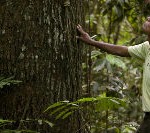December 2014
From SciDev.Net
[RIO DE JANEIRO] Deforestation in Brazil’s Amazon rainforest fell by 18 per cent this year, according to official government figures, but some experts are surprised by the news and fear the true trend remains upward.
The estimated area of forest cleared in the 12 months to the end of July fell from 5,891 square kilometres in 2013 to 4,848 square kilometres in 2014, an area more than twice the size of London, United Kingdom.
This is the second lowest amount of deforestation recorded since monitoring started in 1988, according to Brazil’s government. The data, released on 26 November, come from analysis of satellite images taken by the forest clearing detection service Prodes, run by the country’s National Institute for Space Research (INPE).
The lowest figure on record was for the period of 2011-2012, with 4,571 square kilometres of forest cleared. But the following year saw a 29 per cent increase to 5,891 square kilometres.
Nonetheless, the authorities now say the underlying trend is downward, stating that this year, 83 per cent less forest was destroyed than in 2004.
“The last five years have seen the lowest deforestation rates ever recorded for the Amazon,” said environment minister Izabella Teixeira.
The recent slowdown of deforestation rates is due to several factors, said Teixeira, such as the work of law enforcement teams and a task force for the environmental regularisation of rural properties.
But some experts believe the true picture is less promising. Marco Lentini, who heads the Amazon Programme run by conservation body WWF’s Brazilian office, says he found the recent announcement surprising.
“We didn’t expect those results since we’ve analysed deforestation data from monthly monitoring system DETER [also from INPE] and other independent sources such as Imazon [the Amazonian Institute of Man and Environment] that have showed an upward trend,” he says.
“If we want to conserve biodiversity, maintain critical areas in the Amazon with a minimum level of conservation and an acceptable level of greenhouse gases to keep global warming to less than two degrees Celsius in the next decade, we need to have lower deforestation rates and we’re very far from that,” he adds.
Philip Fearnside, a biologist at the National Institute for Amazonian Research, Brazil, says that he expects deforestation rates to rise next year because of a significant number of new infrastructure initiatives planned for the Amazon, including hydroelectric projects and major roads.
For articles about the Amazon Forest, click here:
Knight, David Marcus. Travels and science in Brazil. Hist. cienc. saude, 2001, vol.8, p.809-822. ISSN 0104-5970













